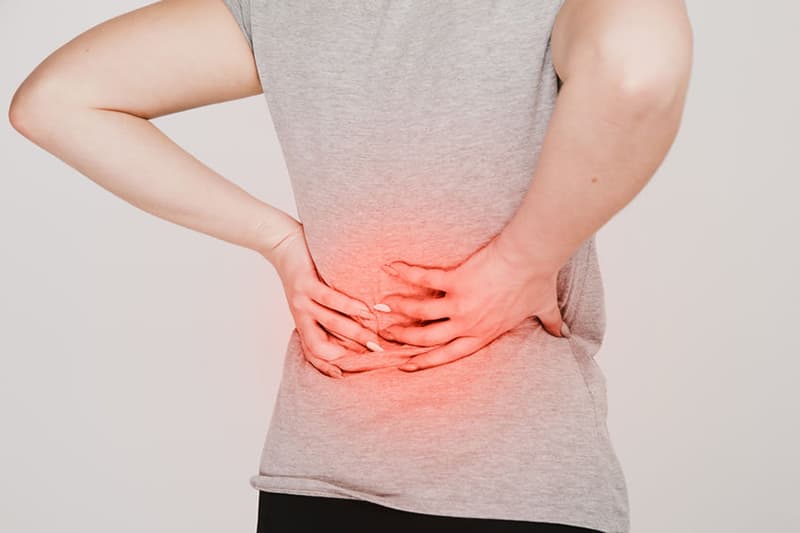table of contents
Back pain is one of the most common health issues affecting people of all ages around the world. Whether it’s a dull ache, a sharp stabbing pain, or a persistent discomfort, back pain can significantly affect the quality of life, limiting mobility and daily activities.
What Is Back Pain?
Back pain refers to discomfort or pain felt in the back — typically in the lower, middle, or upper regions. It can be acute (short-term) or chronic (lasting more than 3 months), and may be caused by injury, improper posture, lifestyle habits, or underlying medical conditions.
Common Causes of Back Pain
- Muscle or Ligament Strain
Heavy lifting, sudden awkward movements, or poor physical condition can strain muscles and ligaments, leading to pain. - Poor Posture
Sitting or standing with poor posture for prolonged periods puts excessive pressure on the spine and muscles. - Herniated or Bulging Discs
Discs act as cushions between the vertebrae; when they become damaged or slip, they can press on nerves and cause pain. - Arthritis
Osteoarthritis can lead to narrowing of the spinal canal (spinal stenosis), causing pain and stiffness. - Osteoporosis
Weak bones can lead to fractures in the vertebrae, resulting in sudden or chronic back pain. - Sedentary Lifestyle
Lack of regular exercise weakens muscles that support the back, making it prone to injuries and pain. - Obesity
Extra body weight puts stress on the spine and joints, increasing the risk of back problems.
Symptoms of Back Pain
- Dull or sharp ache in the lower, mid, or upper back
- Pain that radiates to the legs or buttocks
- Limited flexibility or range of motion
- Muscle stiffness or spasms
- Pain that worsens after prolonged sitting or standing
When to See a Doctor
Seek medical attention if:
- The pain lasts more than a few weeks
- It is severe and doesn’t improve with rest
- You experience numbness or tingling
- You have unexplained weight loss
- The pain follows a fall or injury
- You experience difficulty controlling bladder or bowels (emergency)
Prevention Tips
- Maintain Proper Posture
Sit and stand upright. Avoid slouching or hunching forward. - Exercise Regularly
Strengthen core muscles through yoga, walking, swimming, or light weight training. - Lift Objects Properly
Bend at the knees, not at the waist. Keep the load close to your body. - Maintain a Healthy Weight
Extra weight strains the back and should be controlled through diet and exercise. - Sleep Well
Use a supportive mattress and avoid sleeping on your stomach. - Avoid Prolonged Sitting
Take breaks every 30-45 minutes to stretch or walk around.
Treatment Options for Back Pain
1. Home Remedies
- Rest (but not complete bed rest)
- Warm or cold compresses
- Over-the-counter pain relievers (paracetamol, ibuprofen)
2. Physical Therapy
- Supervised exercises
- Stretching and strengthening routines
- Manual therapy (massage, mobilization)
3. Medical Treatments
- Prescription medications
- Steroid injections
- Surgery (in severe or non-responsive cases)
4. Alternative Therapies
- Chiropractic care
- Acupuncture
- Yoga and mindfulness techniques
Living with Back Pain
While back pain can be frustrating, most cases improve with proper care and preventive measures. Early intervention, a healthy lifestyle, and education are key to managing pain and preventing long-term disability.
Final Thoughts
Back pain doesn’t have to control your life. By understanding its causes and practicing prevention, you can protect your spine and lead a healthier, more active life. If you’re currently dealing with persistent back pain, don’t hesitate to consult a healthcare professional for a personalized treatment plan.



